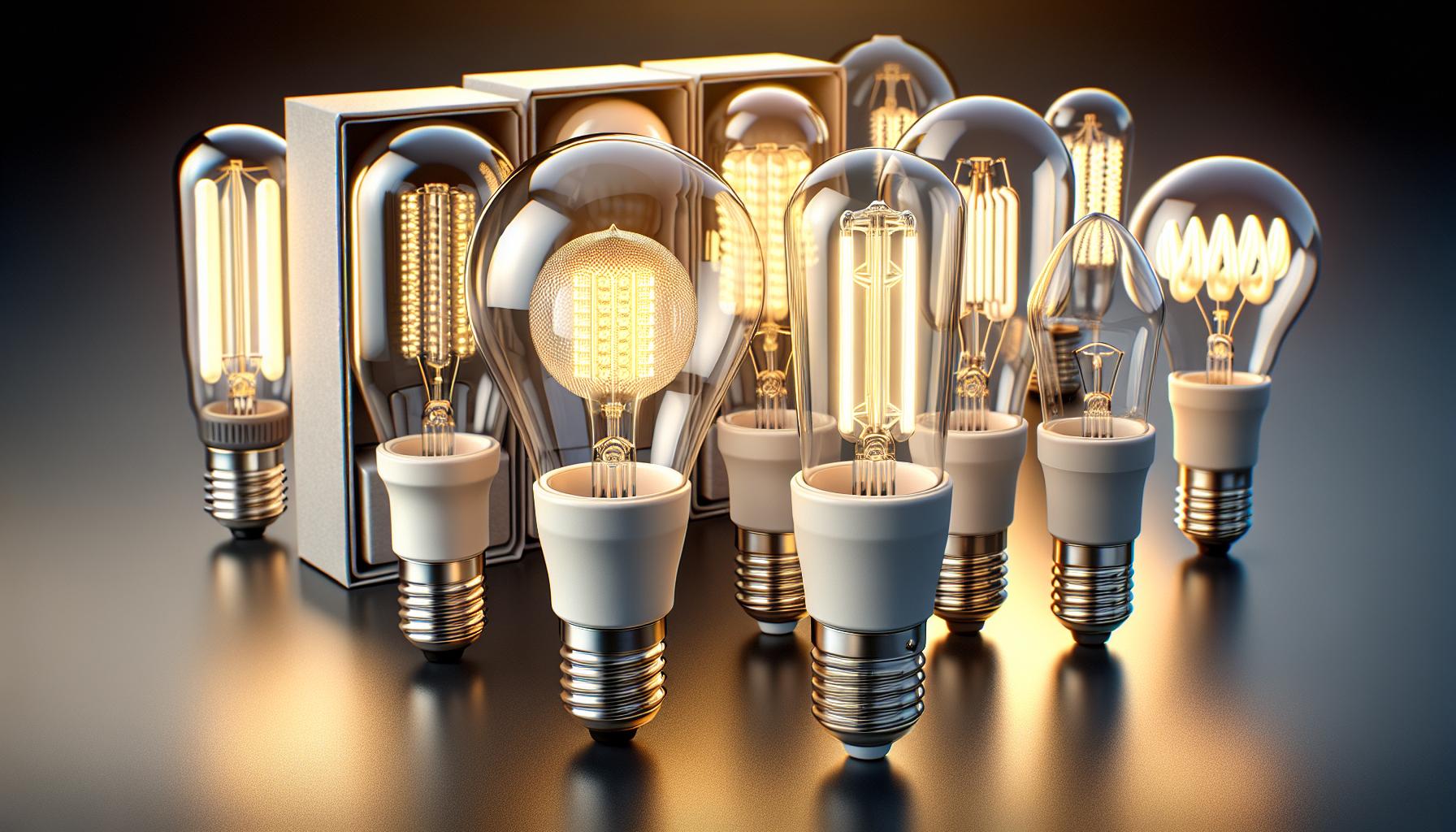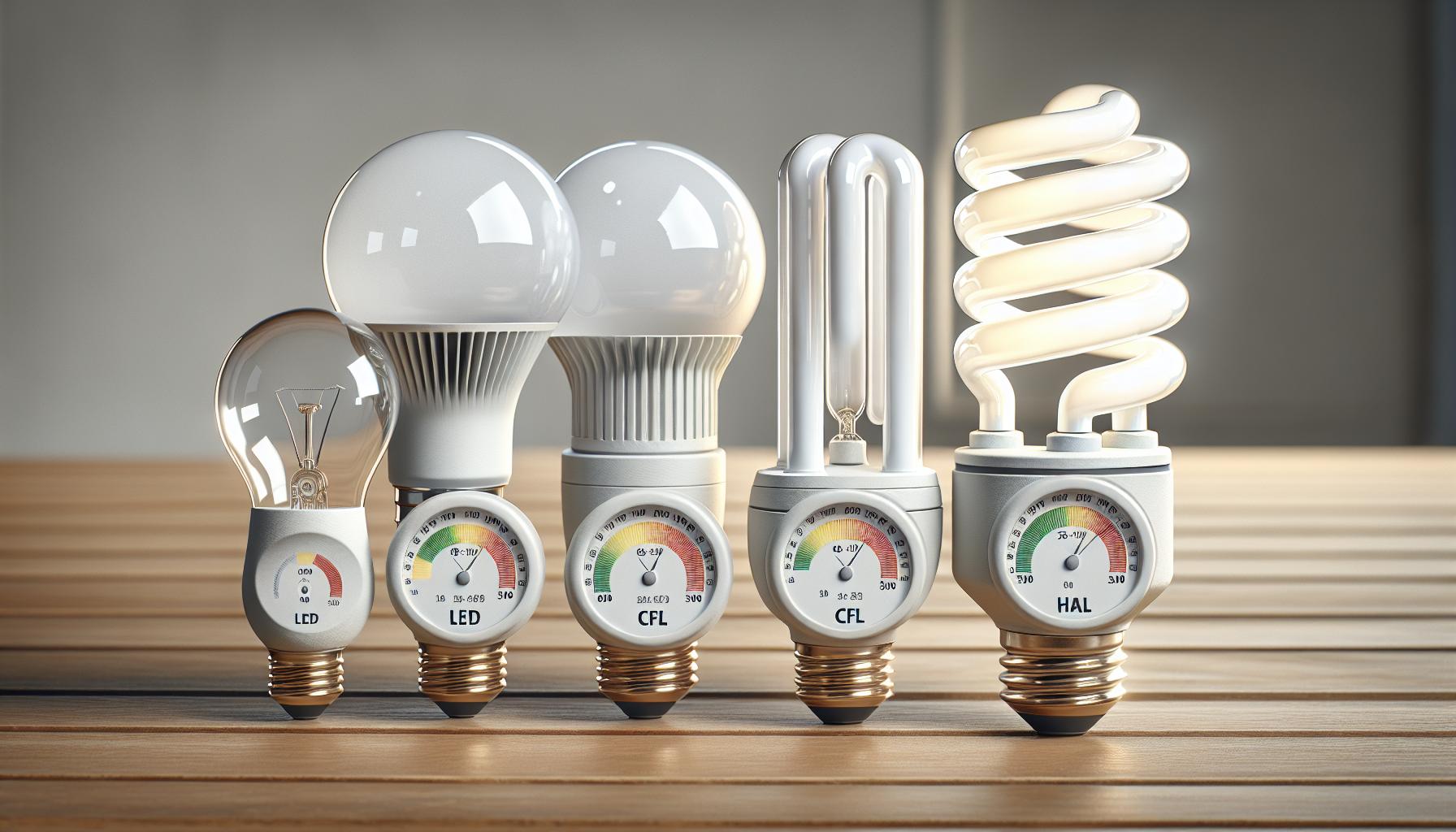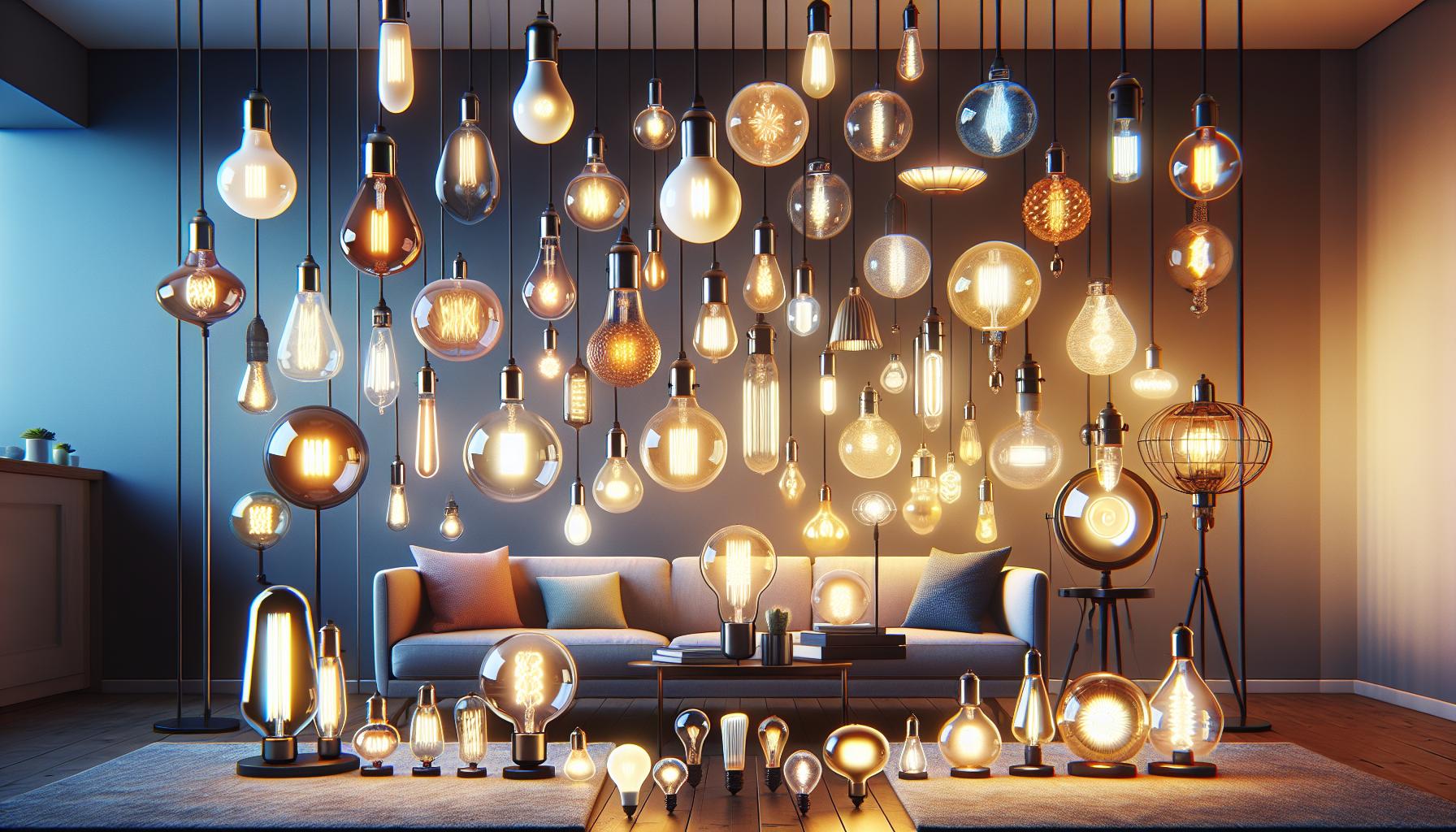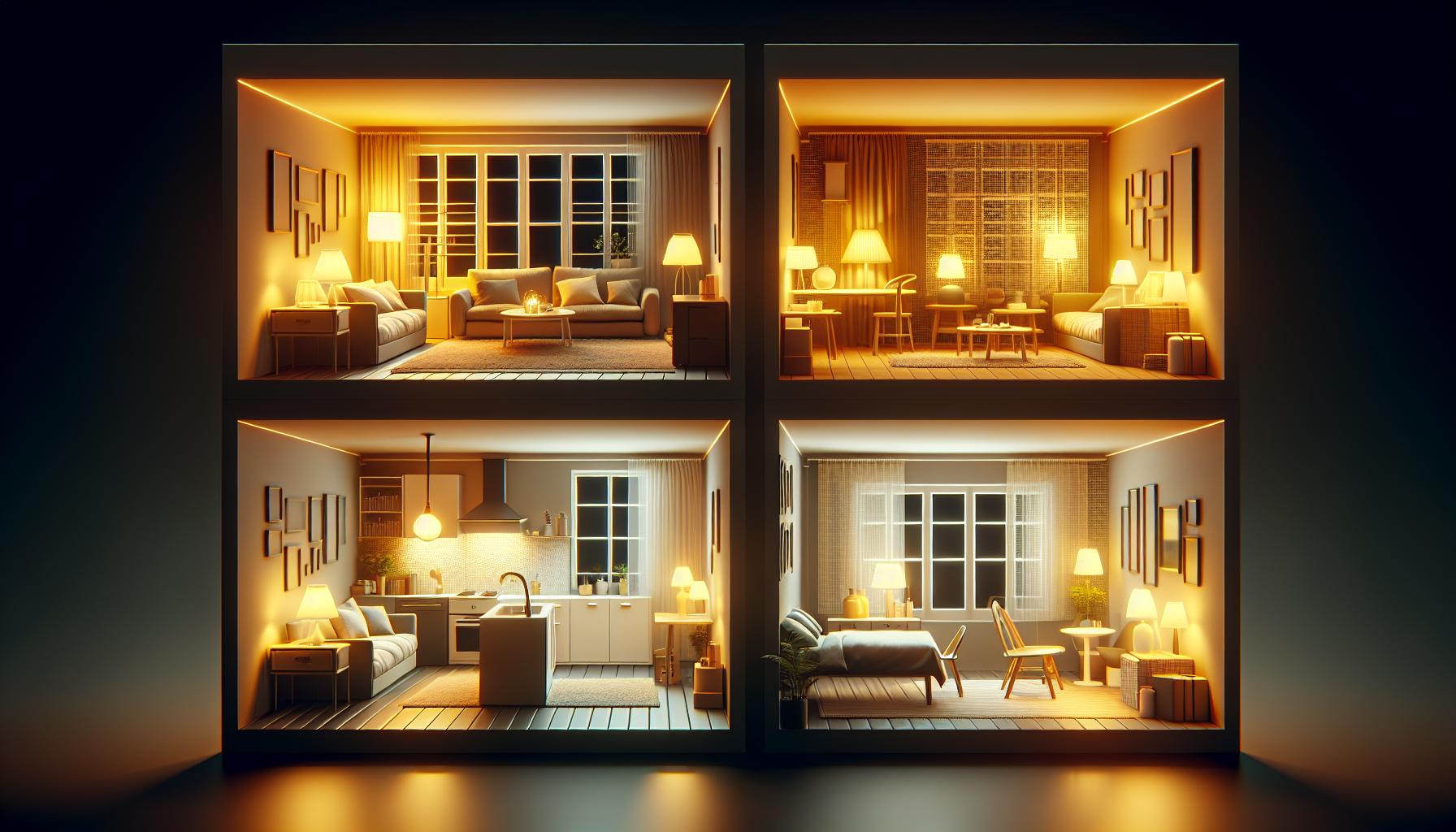Deciding on the best light bulbs for your home can feel like a shot in the dark. You’re bombarded with choices—LED, CFL, halogen, and more—each claiming to be the best. But what does “best” really mean for you?
Think about the cozy ambiance of your living room or the bright, focused light in your office. The right bulb isn’t just about saving energy; it’s about enhancing your space’s look and feel. Let’s shed some light on how to find the perfect match for your needs.
Whether you’re a midnight reader or a sustainability warrior, there’s a bulb out there that’ll hit the mark. Get ready to illuminate your understanding and never second-guess your lighting choices again.
Understanding Different Types of Light Bulbs
Getting the right bulb isn’t just about the wattage or the brightness; it’s also about the vibe it gives your space. Let’s dive into the world of light bulbs so you can make informed choices for your home projects.
LED bulbs have taken the market by storm, and for good reason. They’re energy-efficient powerhouses that last longer than most rock bands these days. Essentially, they convert electricity into light without wasting energy on heat. LED bulbs also come in a wide range of colors and dimmable options, giving you control over the ambiance of your rooms.
Next up are CFLs, or compact fluorescent lamps. These are the swirly ones you’ve probably seen around. They’re like the distant cousins of the big, old-school fluorescent tubes, but way better looking. They use a fraction of the energy compared to incandescent bulbs and have a pretty decent lifespan.
Then there are halogen bulbs. These guys are the more efficient relatives of incandescent bulbs. They shine bright and have a color temperature that’s pretty close to natural daylight. If you’re after a bulb that’ll give your reading nook a sunny feel even when it’s gloomy outside, halogen might be your best bet.
- LED Bulbs: Energy-efficient, long-lasting, and versatile.
- CFLs: Cost-effective, energy savers with a good lifespan.
- Halogen Bulbs: Bright, and closest to natural daylight.
When you’re pondering light bulbs, also factor in the color temperature. Measured in Kelvins, lower numbers mean warmer, yellowish light, while higher numbers give off a cooler, bluer light. Think of how you want your room to feel. Cozy and inviting? Stick to the lower end. Bright and alert? Go higher.
Factors to Consider When Choosing the Best Light Bulbs
When you’re on the hunt for the perfect light bulbs to brighten up your space, there are several key factors that you need to keep in mind. Your choice will significantly impact the ambiance, efficiency, and even your wallet.
Room Functionality plays a pivotal role in your selection. For instance:
- Kitchens and bathrooms benefit from bright, white light that resembles daylight, aiding in tasks like chopping or applying makeup.
- Living areas and bedrooms often call for warmer, dimmable light to create a relaxing environment.
Next, you’ll want to consider the Energy Efficiency of your bulbs. Here’s a quick comparison to guide you:
- LED bulbs tend to use at least 75% less energy and last 25 times longer than incandescent lighting.
- CFL bulbs use about one-third of the energy and last ten times longer than incandescents.
- Halogen bulbs, while more energy-efficient than traditional incandescents, fall short compared to LEDs and CFLs.
Your choice may depend as much on preferred Light Quality as on efficiency. High-quality light defines colors accurately, so for intricate tasks or spaces where color is crucial, pay attention to a bulb’s Color Rendering Index (CRI). For most home uses, a CRI rating of 80 to 90 is sufficient.
Don’t forget about Compatibility and Fittings. Not all light bulbs will fit every fixture – so make sure your selected bulb has the correct base and shape for your lamps or installed fixtures.
« Why Light Bulbs Explode: Avoid Shattering Surprises
How Long Do Rechargeable Light Bulbs Last? Maximize Lifespan with These Tips »
Also, think about Durability and Longevity, especially in hard-to-reach places, to avoid the hassle of frequent replacements. LED bulbs excell in this area, drastically reducing the ladder-climbing drill you’d face with incandescents.
Let’s not overlook Cost. While the initial price tag for an LED bulb might seem steep compared to halogen or incandescent bulbs, their long-term savings in energy consumption often offset the upfront costs.
With an enthusiastic nod to DIY and home lighting projects, remember that the ideal light bulb not only illuminates but enhances your living space, both practically and aesthetically. Choose wisely to ensure your home shines in the best light, every single day.
Energy Efficiency: LED vs CFL vs Halogen
When you’re on the hunt for the most energy-efficient lighting, it’s essential to compare LEDs, CFLs, and halogen bulbs. Let’s dive into what makes each type unique and how they stack up against each other in terms of energy savings.
LEDs, or light-emitting diodes, are the front-runners in energy efficiency. They use up to 80% less energy than traditional incandescent bulbs and last 25 times longer. When you switch to LEDs, you won’t just see your electricity bills plummet, you’ll also make fewer trips to the store for replacements.
CFLs, or compact fluorescent lamps, don’t lag too far behind. They’re the curly cousins of the long fluorescent tubes you’ve seen in offices and garages. CFLs consume about 70% less energy than incandescent bulbs, and they have a reasonably impressive lifespan—usually around 10 times longer. They’re a solid choice if you’re keen on cutting energy costs but prefer a softer light than the intense brilliance LEDs can emit.
Halogen bulbs, while they are more efficient than the old-school incandescent bulbs, fall short compared to LEDs and CFLs. Sure, they can claim about 20-30% energy savings over traditional bulbs, but when you stack them up against LEDs and CFLs, it’s clear that they’re the underdogs in the race for efficiency.
Here’s a quick breakdown of their energy usage:
| Bulb Type | Energy Savings Over Incandescent | Average Lifespan |
|---|---|---|
| LED | Up to 80% | 25x |
| CFL | About 70% | 10x |
| Halogen | 20-30% | Better, but less than CFL/LED |
As a lighting and DIY enthusiast, you’ll appreciate that upgrading your light bulbs is one of the simplest and most impactful home projects. By choosing the right bulb, not only do you save on energy bills, but you also contribute to a greener planet. The longer lifespans of energy-efficient bulbs mean less waste, and that’s something you can feel good about.
Brightness and Color Temperature: Finding the Perfect Match
When you’re on the hunt for the perfect light bulb, brightness and color temperature are key factors that’ll make or break your space. Remember, brightness is measured in lumens, not watts – a common mistake you’ll want to avoid.
The higher the lumens, the brighter the light. You might want a cozy, dim glow in your bedroom, so you’d go for fewer lumens. But if you’re all about crafting or reading, punch up those lumens for clear, bright light.
Let’s talk about color temperature, measured in Kelvins (K), because it’s not just about how bright your light is but also the feel of it. Here’s the lowdown:
- Warm lights (below 3000K) radiate a cozy, warm feel, perfect for living rooms or bedrooms where you want to relax.
- Neutral lights (3000K to 4500K) are ideal for kitchens and bathrooms where tasks need clarity without being too sterile.
- Cool lights (above 4500K) mimic daylight and work wonders in spaces where you need to concentrate, like home offices.
It’s not just picking any bulb and screwing it in. You’ve got to mix and match until the light reflects the vibe you’re going for. Try out different bulbs in various fixtures around your home, seeing them in action is the surest way to find your perfect match.
Remember, experimenting with lighting isn’t just practical; it’s fun! Embrace the DIY spirit and play around with different combinations until each room in your home shines just right. Light has the power to transform a space, and you’re in the driver’s seat to personalize it to your taste.
Choosing the Right Light Bulbs for Different Rooms
As you delve into the various spaces in your home, keep in mind that each room has its unique vibe and utility. Lighting can make or break the atmosphere you’re aiming to cultivate. So, let’s break down the best lighting choices for different rooms, ensuring each space shines to its fullest potential.
For your living room, where you entertain guests and unwind after a long day, you’ll want to strike the right balance between comfort and function. Opt for warm to neutral light bulbs with a color temperature around 2700K to 3500K. These softer hues enhance relaxation but still provide enough light for reading and socializing. Consider using dimmable lamps as well, which allow you to adjust the brightness to suit any mood or activity.
Kitchens, on the other hand, are the heart of the home and command clarity for culinary adventures. Thus, bright, cool light bulbs that approach daylight are your best bet. Aim for bulbs with color temperatures around 4500K to 6000K. These higher Kelvin values replicate natural daylight, helping you stay focused and see what you’re cooking without straining your eyes.
Moving to the bedroom, the sanctuary for sleep and serenity, warm lighting takes center stage again. Here, you’ll benefit from bulbs closer to the 2200K to 3000K range, fostering a peaceful and relaxing environment conducive to a good night’s sleep.
However, let’s not forget bathrooms; these multifunctional spaces require versatile lighting. Neutral to cool bulbs ranging from 3000K to 5000K work well. They’re bright enough for grooming without being harsh, providing a clear, crisp light where you need it most.
Remember, lighting is about creating a feeling as much as it is about visibility. Play around with different light layers—from ambient and task to accent lighting. Use a combination of overhead lights, floor lamps, and task-specific lighting to obtain the right blend of functionality and aesthetics. Lighting should serve you and your home, enhancing each corner, each moment spent within its walls.
Armed with this knowledge, you’re ready to illuminate your home like never before. Light up those rooms, experiment, and find that perfect glow.
Conclusion
Now that you’ve got the scoop on the perfect light bulbs for your home, you’re all set to create the ideal atmosphere in every room. Remember, it’s all about matching the right color temperature with the space’s function and feel. So go ahead, switch things up and watch how the right light can transform your home. Happy lighting!
Frequently Asked Questions
What is the best color temperature for living room lighting?
For a living room, warm to neutral light bulbs within a color temperature range of 2700K to 3500K are recommended to provide a comfortable yet functional atmosphere.
What type of lighting is suggested for a kitchen?
It is best to use bright, cool light bulbs in the kitchen, preferably within a color temperature range of 4500K to 6000K, to ensure clarity for cooking tasks.
What lighting should I choose for my bedroom to promote sleep?
For bedrooms, selecting warm lighting with a color temperature between 2200K to 3000K can help create a restful environment conducive to sleep.
What’s the ideal color temperature for bathroom lighting?
Neutral to cool light bulbs with a color temperature of 3000K to 5000K are ideal for bathrooms, particularly for grooming purposes.
How can I achieve a blend of functionality and aesthetics with home lighting?
Using different layers of lighting and combinations of fixtures can help you achieve a functional yet aesthetically pleasing lighting arrangement in each room of your home.





